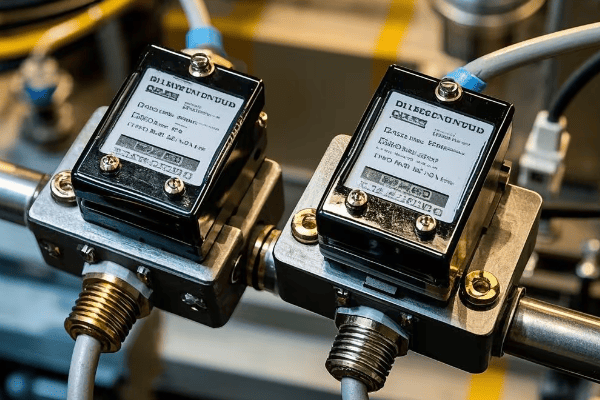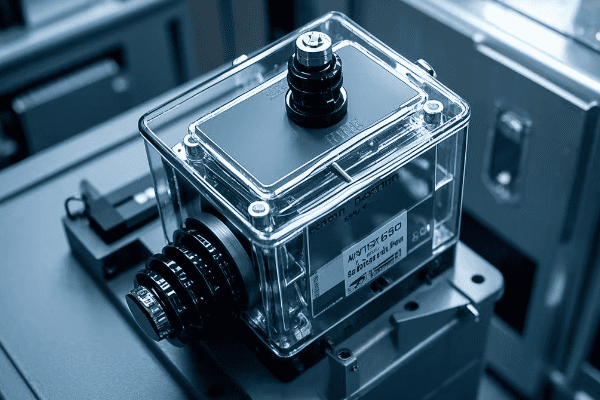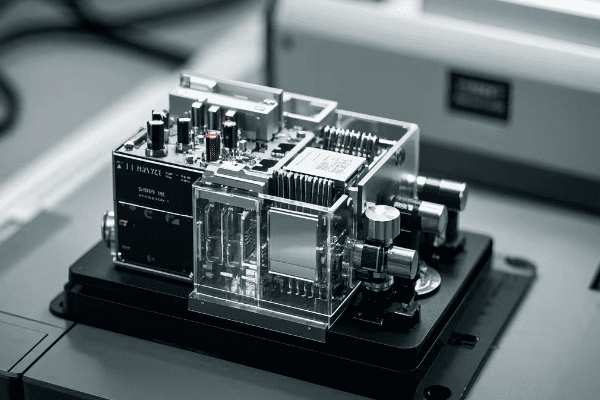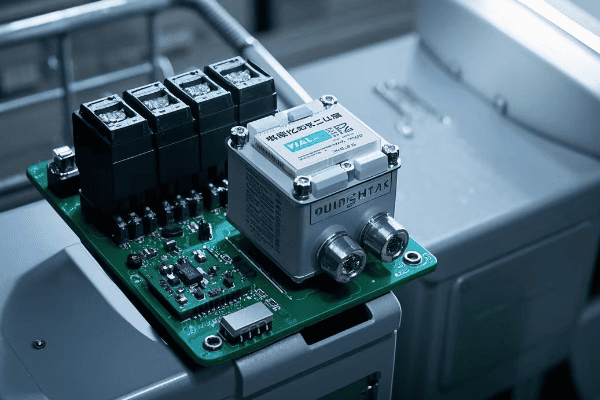Oil Surge Relay vs. Buchholz Relay: What’s the Difference and Why Does It Matter?
Is your transformer protection keeping you up at night? You’re not alone. Many engineers struggle to choose between oil surge relays and Buchholz relays, knowing that the wrong choice could lead to costly failures.
Oil surge relays and Buchholz relays are both critical for transformer protection, but they function differently. Oil surge relays detect rapid oil movements, responding in milliseconds. Buchholz relays sense both oil surges and gas accumulation, offering dual protection. Understanding these differences is key to optimal transformer safeguarding and preventing catastrophic failures.

I’ve spent over two decades working with both types of relays, and I’ve seen firsthand how crucial the right choice can be. In this article, we’ll explore the key differences between oil surge and Buchholz relays, their strengths and weaknesses, and how to choose the right protection for your transformer. Let’s dive in and uncover the secrets of these vital devices.
What is an Oil Surge Relay: The Modern Guardian of Transformer Health?
Have you ever wondered what’s keeping your million-dollar transformer safe from sudden disasters? Meet the oil surge relay, the unsung hero of modern transformer protection.
An oil surge relay is a cutting-edge device that detects rapid oil movements in transformers. It responds to internal faults within milliseconds, triggering alarms or shutdowns. This lightning-fast reaction can prevent catastrophic failures, potentially saving millions in equipment and downtime costs.

I remember the first time I saw an oil surge relay in action. It was at a power plant in Texas, and the speed at which it detected a fault and shut down the transformer was truly impressive. Let me break down how these modern guardians work and why they’re becoming increasingly popular in the industry.
How Oil Surge Relays Operate
The principle behind oil surge relays is simple yet effective:
-
Constant Monitoring:
- Installed in the pipe between the main tank and conservator
- Watches for sudden oil movements 24/7
-
Rapid Detection:
- Uses a float mechanism sensitive to oil flow
- Triggers when oil velocity exceeds a preset threshold
-
Instant Response:
- Activates alarms or initiates transformer shutdown
- Typically reacts in less than 20 milliseconds
Benefits of Oil Surge Relays
These devices offer several key advantages:
-
Unmatched Speed:
- Reacts faster than traditional protection methods
- Can stop faults before they escalate into major issues
-
High Sensitivity:
- Detects even minor internal problems
- Helps catch issues early, reducing long-term repair costs
-
Simple Reliability:
- Mechanical design means fewer points of failure
- Less prone to false alarms than some electronic systems
Real-World Applications
I’ve seen oil surge relays make a significant difference in various settings:
-
Power Plants:
- Protect critical, high-capacity transformers
- Prevent widespread blackouts and associated economic losses
-
Industrial Facilities:
- Safeguard expensive manufacturing equipment
- Minimize costly production interruptions
-
Renewable Energy Sites:
- Protect transformers in wind and solar farms
- Ensure consistent power delivery to the grid
| Feature | Benefit | Real-World Impact |
|---|---|---|
| Millisecond Response | Stops faults instantly | Prevents major equipment damage |
| High Sensitivity | Catches minor issues | Reduces long-term maintenance costs |
| Simple Design | Fewer parts to fail | Increases overall system reliability |
| Versatile Application | Fits various transformer sizes | Adaptable to different industry needs |
In my experience, the adoption of oil surge relays has led to a significant reduction in transformer failures. At one power plant where I worked, we installed these relays on all major transformers. Within the first year, we caught three developing faults that could have led to catastrophic failures. The cost savings from preventing these failures alone justified the investment in the new technology.
However, it’s important to note that oil surge relays are not a one-size-fits-all solution. They work best as part of a comprehensive protection system. I always advise my clients to consider their specific needs, transformer size, and operating environment when deciding on protection measures.
As transformer technology evolves, so do protection devices like oil surge relays. The latest models incorporate digital sensors and advanced analytics, further improving their accuracy and reliability. It’s an exciting time in the field of transformer protection, and I’m eager to see how these devices continue to develop and safeguard our power systems.
Understanding the Buchholz Relay: A Time-Tested Transformer Protector?
Are you familiar with the Buchholz relay, the stalwart guardian of transformers for nearly a century? This device has been a cornerstone of transformer protection, but how does it stack up in today’s rapidly evolving power industry?
A Buchholz relay is a gas-actuated protective device for oil-immersed transformers. It detects both oil surges and gas accumulation caused by internal faults. Located between the main tank and conservator, it provides dual protection against slow-developing and sudden faults, making it a versatile and reliable safeguard for transformer health.

I’ve worked with Buchholz relays throughout my career, and their reliability never ceases to impress me. Let’s delve into how these time-tested devices work and why they remain relevant in modern power systems.
How Buchholz Relays Function
Buchholz relays operate on two key principles:
-
Gas Detection:
- Upper chamber collects gases from slow-developing faults
- Float switch triggers an alarm when gas accumulates
-
Oil Surge Detection:
- Lower chamber responds to sudden oil movements
- Activates a trip signal for severe faults
Key Components of a Buchholz Relay
Understanding its parts helps appreciate its functionality:
-
Upper Chamber:
- Collects gases from minor faults
- Houses the alarm float switch
-
Lower Chamber:
- Detects rapid oil flow
- Contains the trip float switch
-
Sight Glass:
- Allows visual inspection of gas accumulation
- Useful for maintenance checks
Advantages of Buchholz Relays
These devices offer several benefits:
-
Dual Protection:
- Detects both slow-developing and sudden faults
- Provides comprehensive transformer safeguarding
-
Reliability:
- Simple mechanical design ensures long-term dependability
- Proven track record over decades of use
-
Versatility:
- Suitable for various transformer sizes and types
- Can be used in conjunction with other protective devices
| Feature | Function | Real-World Benefit |
|---|---|---|
| Gas Collection | Detects slow faults | Early warning of developing issues |
| Oil Surge Detection | Responds to sudden faults | Rapid protection against major failures |
| Visual Inspection | Enables easy checks | Simplifies routine maintenance |
| Mechanical Operation | Ensures long-term reliability | Reduces risk of electronic malfunctions |
In my experience, Buchholz relays have saved countless transformers from severe damage. I recall a incident at a substation in California where a Buchholz relay detected a slow gas leak in a large transformer. The early warning allowed us to schedule maintenance during a planned outage, avoiding an unexpected failure that could have left thousands without power.
However, it’s important to note that while Buchholz relays are highly reliable, they’re not without limitations. Their response to oil surges is typically slower than modern oil surge relays. Additionally, they may not detect some types of high-impedance faults that don’t produce significant gas or oil movement.
Despite these limitations, Buchholz relays remain a crucial part of transformer protection systems. Their ability to detect slow-developing faults complements faster-acting devices like oil surge relays. In many cases, I recommend using both types of relays for comprehensive protection.
As we move towards smarter, more interconnected power systems, Buchholz relays are evolving too. Modern versions often include digital outputs for easy integration with SCADA systems. Some manufacturers are even developing hybrid devices that combine the reliability of Buchholz relays with the speed of electronic sensors.
Key Differences Between Oil Surge and Buchholz Relays: A Side-by-Side Comparison?
Are you struggling to choose between an oil surge relay and a Buchholz relay for your transformer? You’re not alone. Many engineers grapple with this decision, knowing that the right choice can mean the difference between a protected transformer and a costly failure.
Oil surge relays and Buchholz relays differ in their detection methods and response times. Oil surge relays focus on rapid oil movements, reacting within milliseconds. Buchholz relays detect both oil surges and gas accumulation, offering dual protection but with slower response to sudden faults. Understanding these differences is crucial for optimal transformer protection.

In my years of working with transformer protection systems, I’ve seen the strengths and weaknesses of both types of relays. Let’s break down the key differences to help you make an informed decision for your specific needs.
Detection Methods
The primary difference lies in what these relays detect:
-
Oil Surge Relays:
- Focus solely on rapid oil movements
- Highly sensitive to sudden changes in oil flow
-
Buchholz Relays:
- Detect both oil surges and gas accumulation
- Offer dual protection against different types of faults
Response Time
Speed of reaction is a crucial factor:
-
Oil Surge Relays:
- Extremely fast response (typically < 20 ms)
- Ideal for protecting against sudden, severe faults
-
Buchholz Relays:
- Slower response to oil surges (100-200 ms)
- Gradual response to gas accumulation (hours to days)
Types of Faults Detected
Each relay excels at detecting different issues:
-
Oil Surge Relays:
- Excellent for sudden, high-energy faults
- May miss slow-developing problems
-
Buchholz Relays:
- Detect both rapid faults and slow-developing issues
- Particularly good at catching gradual insulation breakdown
Installation and Maintenance
Practical considerations for implementation:
-
Oil Surge Relays:
- Simpler installation, often retrofittable
- Less maintenance required
-
Buchholz Relays:
- More complex installation
- Require periodic gas analysis and float checks
| Feature | Oil Surge Relay | Buchholz Relay |
|---|---|---|
| Primary Detection | Rapid oil movement | Oil surges and gas accumulation |
| Response Time | < 20 ms | 100-200 ms (surges), hours/days (gas) |
| Fault Types | Sudden, high-energy faults | Both sudden and gradual faults |
| Maintenance | Minimal | Periodic gas analysis required |
| Cost | Generally higher | Usually more economical |
In my experience, the choice between these relays often depends on the specific application. For instance, I once worked on a project for a large power plant where we installed oil surge relays on critical transformers. The millisecond response time was crucial in preventing a potential catastrophic failure during a severe electrical storm.
On the other hand, at a smaller substation, we opted for Buchholz relays. The dual protection against both sudden faults and slow-developing issues proved invaluable. We caught a gradual insulation breakdown that could have been missed by an oil surge relay alone.
It’s important to note that these relays are not mutually exclusive. In many high-stakes environments, I recommend using both. For example, at a nuclear power plant, we implemented a comprehensive protection system using both oil surge and Buchholz relays. This redundancy provided an extra layer of security for these critical transformers.
When advising clients, I always emphasize the importance of considering their specific needs:
-
Critical Infrastructure:
- For power plants or major substations, the speed of oil surge relays can be crucial
- Consider using both types for maximum protection
-
Distribution Transformers:
- Buchholz relays often suffice, offering good protection at a lower cost
- Oil surge relays might be overkill for smaller, less critical units
-
Industrial Applications:
- Depends on the criticality of the process and potential downtime costs
- Oil surge relays can be justified if rapid shutdown is essential
As transformer technology evolves, so do protection devices. We’re seeing hybrid solutions that combine the best features of both relay types. These advanced systems offer the speed of oil surge relays with the comprehensive detection capabilities of Buchholz relays.
Conclusion
Oil surge and Buchholz relays each have unique strengths in transformer protection. Oil surge relays offer rapid response to sudden faults, while Buchholz relays provide comprehensive detection of both fast and slow-developing issues. The best choice depends on specific needs and criticality of the application.
Free CHBEB Transformer Catalog Download
Get the full range of CHBEB transformers in one catalog.
Includes oil-immersed, dry-type, pad-mounted, and custom solutions.
Quick Message
Request A free quote
We'd like to work with you
- +86 15558785111
- [email protected]
- +86 15558785111
What We Do
CHINA BEI ER BIAN (CHBEB) GROUP, with 218 million in registered capital, originated from Beijing Beierbian Transformer Group. Headquartered in Beijing for R&D, it operates major production bases in Nanjing and Yueqing, producing high-quality products.
Latest Product
address
BeiJing
No 3,RongJing East Road,BeiJing Economic Technological Development Area,BeiJing,China
JiangSu
No 7️Xiangfeng Road,Jiangning,NanJing,JiangSu,China
WenZhou
No.211, Wei 16 Road, Industrial Zone, Yueqing, Wenzhou, Zhejiang, China.
XiangYang Industrial Zone ,YueQing,WenZhou,ZheJiang,China
contact us
- [email protected]
- +86 13057780111
- +86 13057780111
- +86 15558785111
Copyright © Bei Er Bian Group


